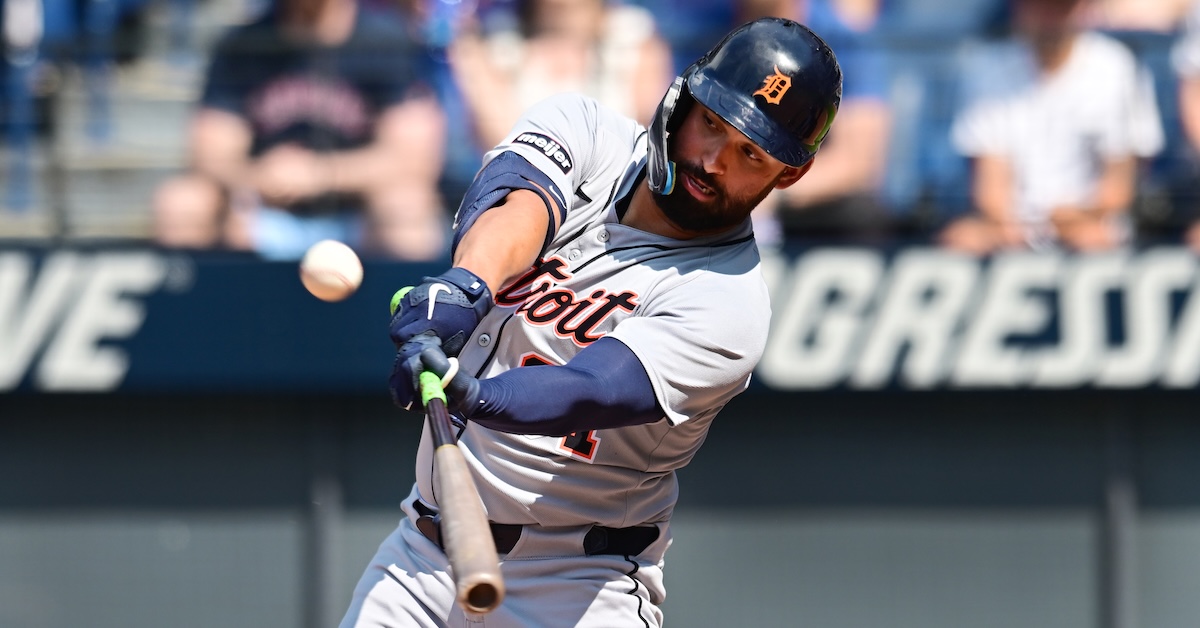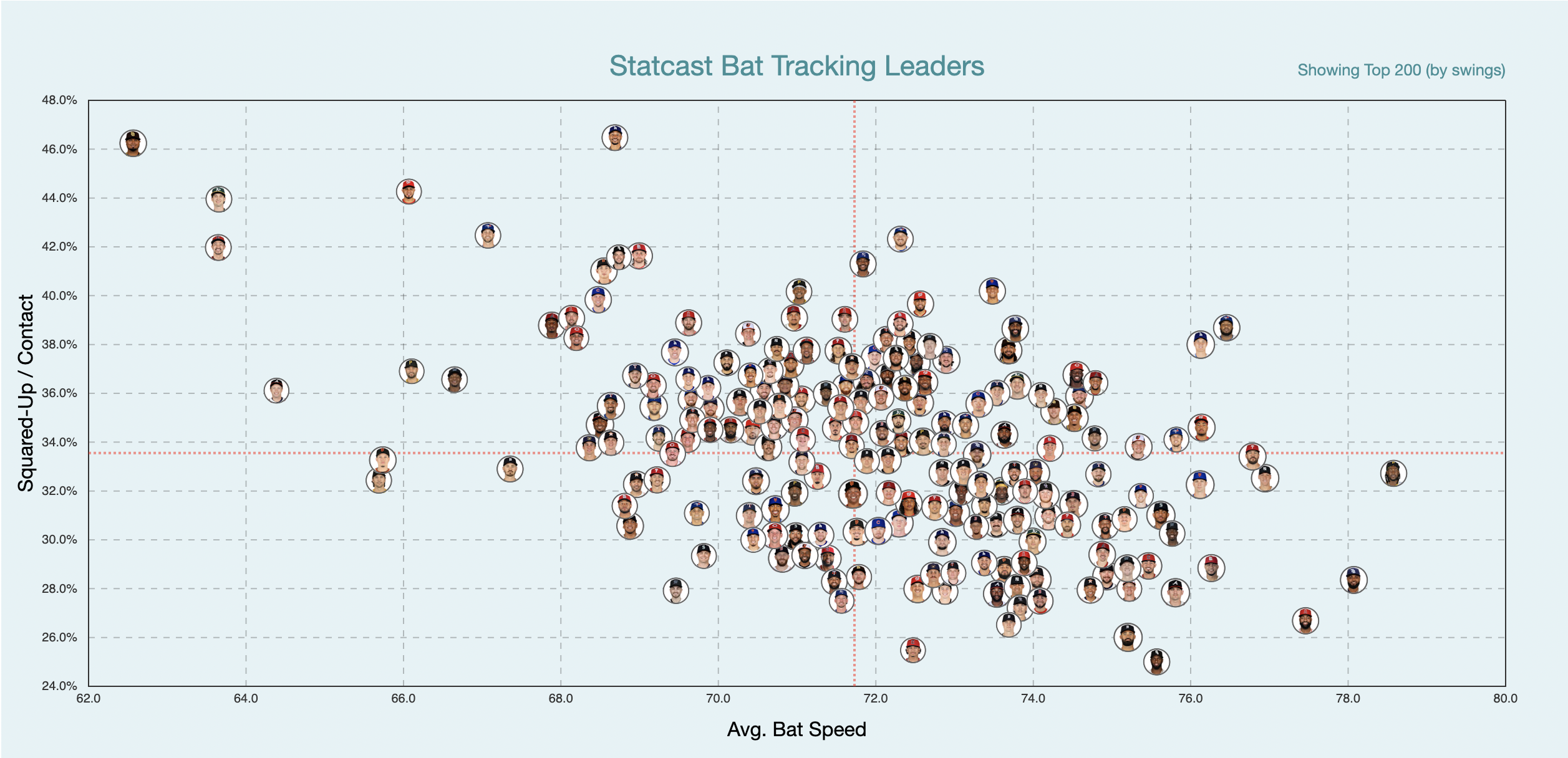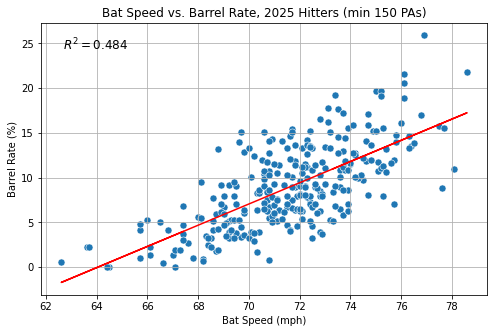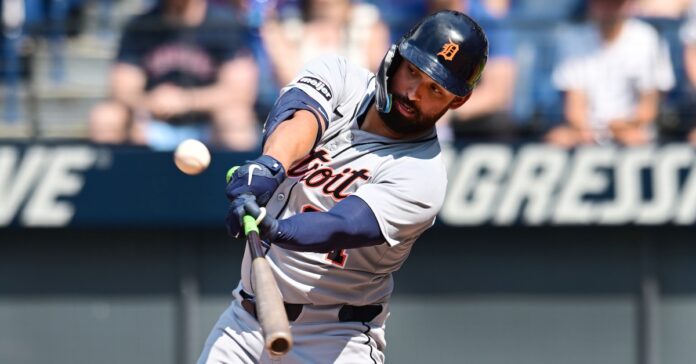
On final Monday’s episode of the Charges and Barrels podcast, Derek VanRiper raised a curious contradiction. “[Riley Greene is] first percentile in squared-up proportion, however 97th percentile in barrel price, which — I’m positive there’s a proof, I don’t know what it’s simply but.” In response, Eno Sarris requested, “How can he barrel it with out squaring it up?” It was an incredible query. In colloquial use, a squared-up ball is synonymous with a barreled ball. So what’s happening right here, precisely?
The very first thing to know: A squared-up ball shouldn’t be essentially a well-hit ball, as Davy Andrews highlighted when these stats had been first made public final June. To know why, one should first develop into acquainted with the Statcast definition of squared up. The MLB glossary entry for squared-up price defines it thusly: “A swing’s squared-up price tells us how a lot of the best potential exit velocity accessible (primarily based on the physics associated to the swing velocity and pitch velocity) a batter was in a position to get hold of – it’s, at its easiest, how a lot exit velocity did you get as a share of how a lot exit velocity was potential primarily based in your swing velocity and the velocity of the pitch.” If a hitter generates 80% of their potential exit velocity on a given swing and the ball is put in play, the batted ball is taken into account squared up.
We’d quibble over the simplicity of that definition. In any case, as Davy confirmed, squared-up balls could be hit at tremendous low speeds — if all it means is {that a} hitter channelled 80% of the potential exit velocity, then 80% of a half-swing shouldn’t be very a lot exit velocity.
It’s additionally potential to do harm with out making frequent flush contact; Greene exhibits us how. As Ben Clemens wrote simply a few weeks in the past, Greene is posting yet one more glorious offensive marketing campaign regardless of one of many larger strikeout charges amongst certified hitters. He’s doing it unconventionally, swinging a ton in early counts to maximise harm. He’s additionally unconventional in one other sense: He barrels the ball a ton whereas infrequently squaring it up.
A part of the reason for a way this works is tied to the character of swinging exhausting. When the bat velocity statistics first dropped, it instantly grew to become clear that there’s a sturdy detrimental relationship between bat velocity and the flexibility to sq. the ball up, at the least by the Statcast definition. Click on over to the bat monitoring leaderboard, and the very first thing you’ll see is that this picture, which exhibits the detrimental correlation between these two variables:

That’s no shock. By the Statcast definition of a squared-up ball, gradual swingers will all the time come out on high, as a result of swinging slower permits for better barrel accuracy. But it surely’s not all dangerous information for exhausting swingers. Additionally they have a tendency to provide probably the most beneficial sort of batted ball: a barrel.
Naturally, bat velocity is correlated — positively — with barrel price. A barrel, by the Statcast definition, is any sort of batted ball the place the anticipated batting common is at the least .500 and the anticipated slugging proportion is at the least 1.500. Barrels are usually clustered in a fairly slim exit velocity/launch angle vary, someplace north of 100 mph by way of exit velocity and between 15 and 40 levels or so of launch angle:

Because the scatterplot beneath exhibits, the connection between bat velocity and barrel price is extraordinarily tight:

Greene’s common bat velocity — 75.2 mph — is within the 91st percentile, so on some stage, a excessive barrel price and a low squared-up price is to be anticipated. Even so, the unfold between these two metrics is hanging. His barrel price is larger than his squared-up price! Just one different hitter has a decrease squared-up-minus-barrel price — Aaron Decide. And that offers a touch into how, precisely, Greene is pulling this off.
Decide racks up an obscene variety of barrels. Already, he’s mashed 60 this 12 months, good for a 25.9% barrel price. Like Greene, his squared-up price is low — not as low, however comfortably an ordinary deviation beneath the imply. But in addition like Greene, Decide is superb at changing his squared-up balls into barrels.
No one comes significantly near Decide on this metric. Practically 40% of his squared-up balls are transformed into barrels, by far the best price within the league. (The league common is 13.6%.) As you may need guessed, Greene additionally excels right here, rating fifth amongst all hitters with at the least 150 plate appearances:
Squared-Up Barrels
SOURCE: Baseball Savant
Minimal 150 plate appearances.
In order that’s the primary a part of this equation. Greene may not sq. the ball up that always, however when he does, it’s regularly crushed. The opposite a part of the equation? Greene hits a ton of foul balls.
Greene’s 315 foul balls rank fifth amongst all hitters. When Greene makes contact with the ball, it goes foul 56% of the time. That mark ranks eleventh out of all hitters with at the least 150 plate appearances; in addition to Cal Raleigh, no person else in Greene’s squared-up-to-barrel cohort fouls off almost as many balls:
Foul Ball Charges
SOURCE: Baseball Savant
Minimal 150 plate appearances. Foul balls divided by pitches that finish with contact.
All of these foul balls — along with his seventh percentile whiff price — contribute to the squared-up proportion denominator, sinking Greene’s squared-up price to the very backside of certified hitters. Importantly, foul balls are usually not a part of the barrel price denominator. The barrel price that exhibits up on the Savant participant web page popsicles is a measure of barrels per batted ball occasion. A bunch of foul balls do nothing to have an effect on a hitter’s barrel price, however they’ll go a great distance towards tanking a squared-up price.
It isn’t essentially intuitive to suppose {that a} hitter might be so good at barreling the ball and so dangerous at squaring it up. However breaking it down on this style, I believe it begins to make clear this ostensible conundrum. Barrels are exhausting to return by. Even Decide, the barrel GOAT, hits one simply over 1 / 4 of the time he places a ball in play. To be a barrel king like Decide or Greene, you don’t have to crush that many baseballs, at the least on an absolute foundation. However you higher be sure that when the ball is in play, it will get smushed.
Greater than something, I believe these two knowledge factors paint a compelling image of the fashionable hitter. Greene, maybe greater than some other hitter, goes for broke, virtually just like the anti-Luis Arraez. His swing tilt is the steepest within the sport. He mishits a bunch of pitches. He whiffs a ton. However when he connects, he does harm. And despite the fact that these harm occasions are comparatively rare, they’re beneficial sufficient to make him one of many higher hitters in baseball.
